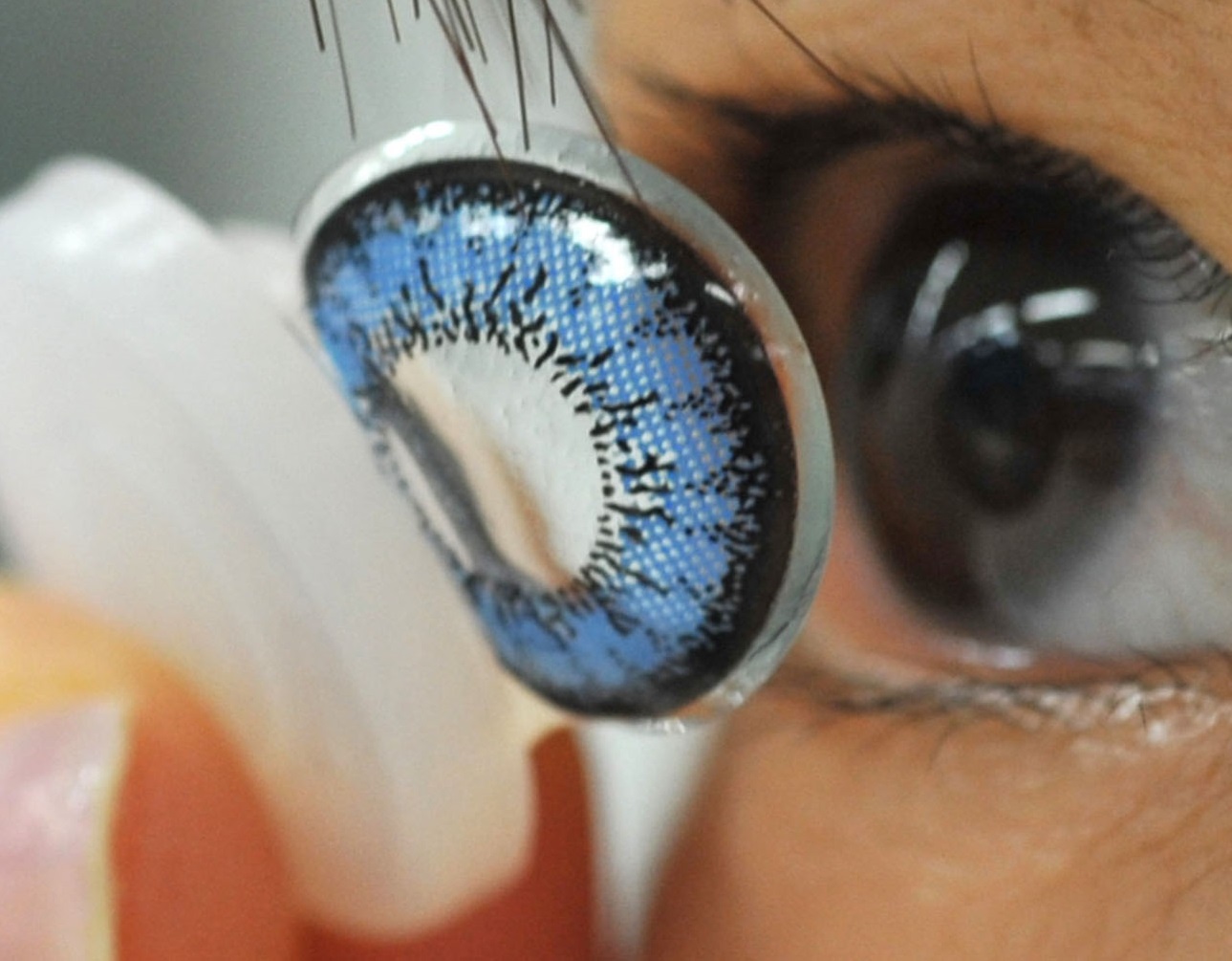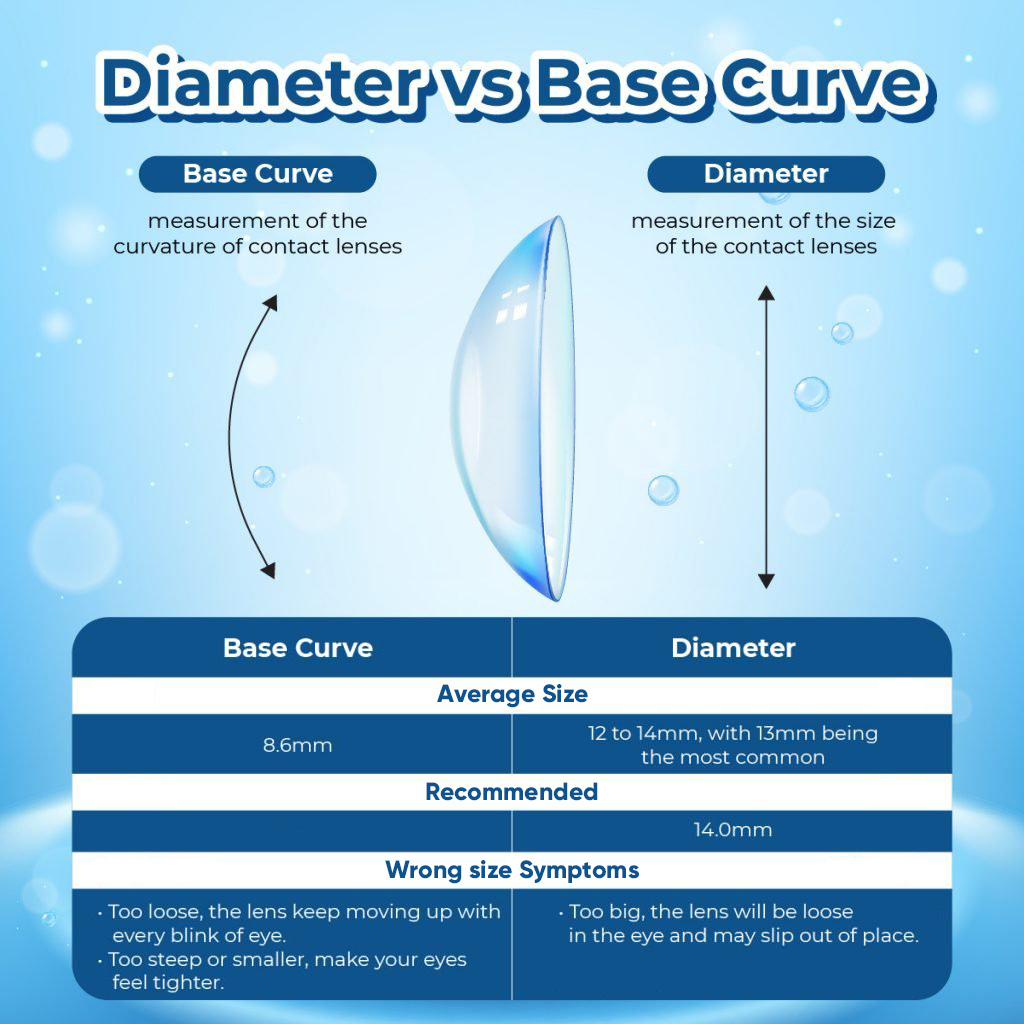Finding the right contact lenses involves more than just getting the correct prescription. It is also essential to ensure that the base curve and diameter of the lens fit your eyes comfortably and securely. This article will provide updated information on the wrong base curve & diameter symptoms, how to tell if your contacts are not the right size, and how to address these issues to maintain eye health and comfort.
Table of contents
Estimated reading time: 6 minutes
Is A Fitted Contact Lens Important?
Maybe we did not realize it, but when buying any clothing or shoes we will require the sizes that fitted us, getting ourselves a pair of contact lenses doesn’t have the same reputation. Some did not aware that wearing poorly fitted contact lens can cause serious harm to your overall eye health.
If you wear lenses that don’t fit your eyes there’s a good chance you’ll develop contact lens intolerance. This condition can cause a person to be forced to wear eyeglasses or undergo laser vision correction. People with contact lens intolerance are not able to apply lenses to their eyes without pain. Or wearing them for more than a few minutes.
How To Tell If Your Contacts Are Not The Right Size?
DIAMETER VS BASE CURVE
What is Diameter Size (DIA)?
Diameter is the measurement of the size of the contact lenses. Circle lenses are available in different sizes from 14.00 mm to 20.00 mm being the biggest. An average fit contact lens should cover past your iris, which is 1-2 millimetres bigger. If on the other hand your contact lens sits exactly on the edge of the iris called limbus; you may risk leaving it scratched.
The size eyes of an average person for adults are usually from 26mm to 28mm. Iriz size varies between 12 to 14mm, with 13mm being the most common. Hence, 14.0mm diameter is the size that best sit in your eyes.
Larger diameter lenses are popular among those seeking an eye-enlarging effect or for cosplay purposes. They are ranging from 14.5-16mm, providing a more striking appearance with bigger eyes. When some will go for 14.0mm that tends to lean towards a more natural and non-enlarging style.
Recognizing Wrong Diameter Symptoms
An incorrect diameter can also cause problems for contact lens wearers. Some symptoms of the wrong diameter include:
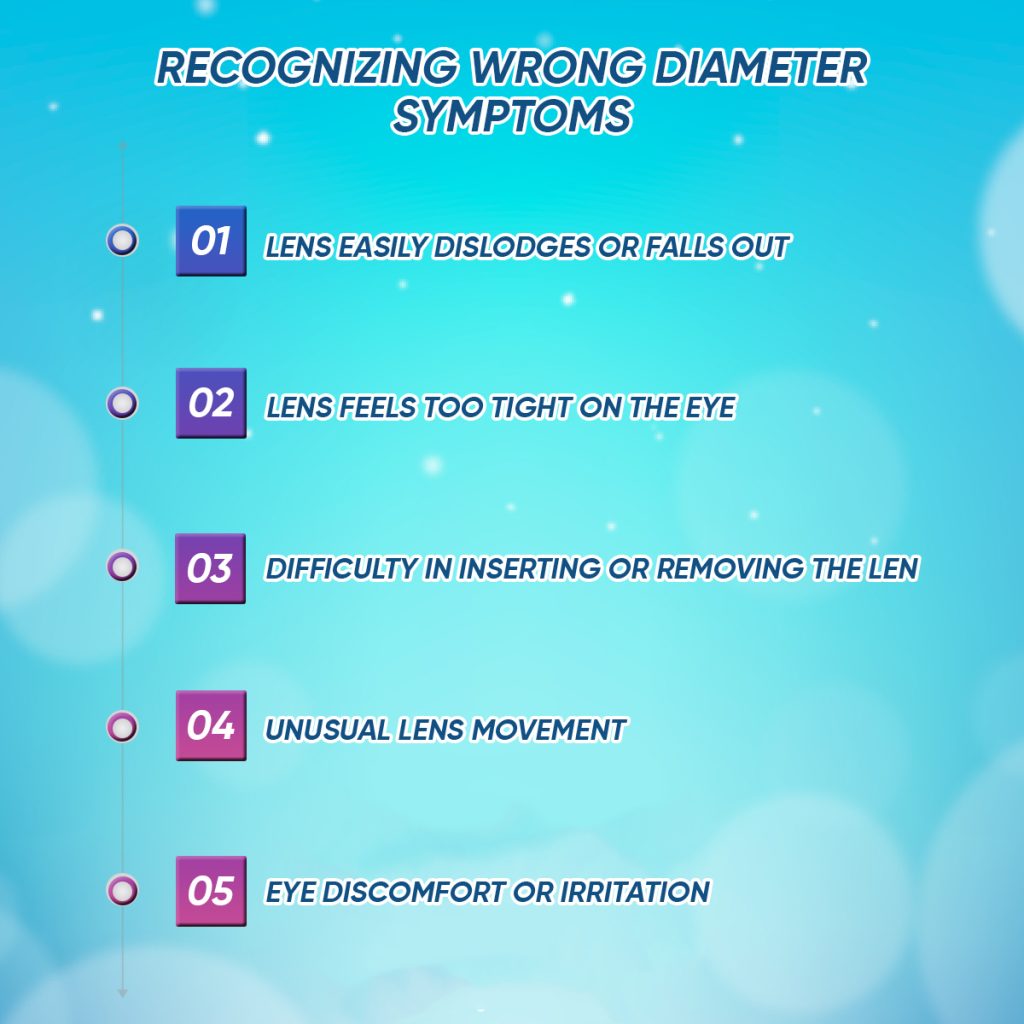
- Lens easily dislodges or falls out: If the lens diameter is too small, it may not cover the cornea properly, increasing the risk of the lens dislodging or falling out[^5^].
- Lens feels too tight on the eye: A diameter that is too large may cause the lens to fit too tightly on the eye, causing discomfort or irritation.
- Difficulty in inserting or removing the lens: The wrong size contact lenses can make it challenging to insert or remove them from the eye.
- Unusual lens movement: Similar to the wrong base curve, an incorrect diameter can also cause excessive lens movement, affecting your vision and comfort.
- Eye discomfort or irritation: A poorly fitting diameter can lead to constant irritation and discomfort, much like the wrong base curve[^6^].

What is Base Curve Size (BC)?
Base curve is the measurement of the curvature of contacts. It is important in order to allow the contact lens to fit well to your cornea for comfort, to facilitate tear exchange, and to allow oxygen transmission. An average base curve is 8.6mm.
Recognizing Wrong Base Curve Symptoms
When the base curve of your contact lenses is not suitable for your eye shape, you may experience several symptoms, including:
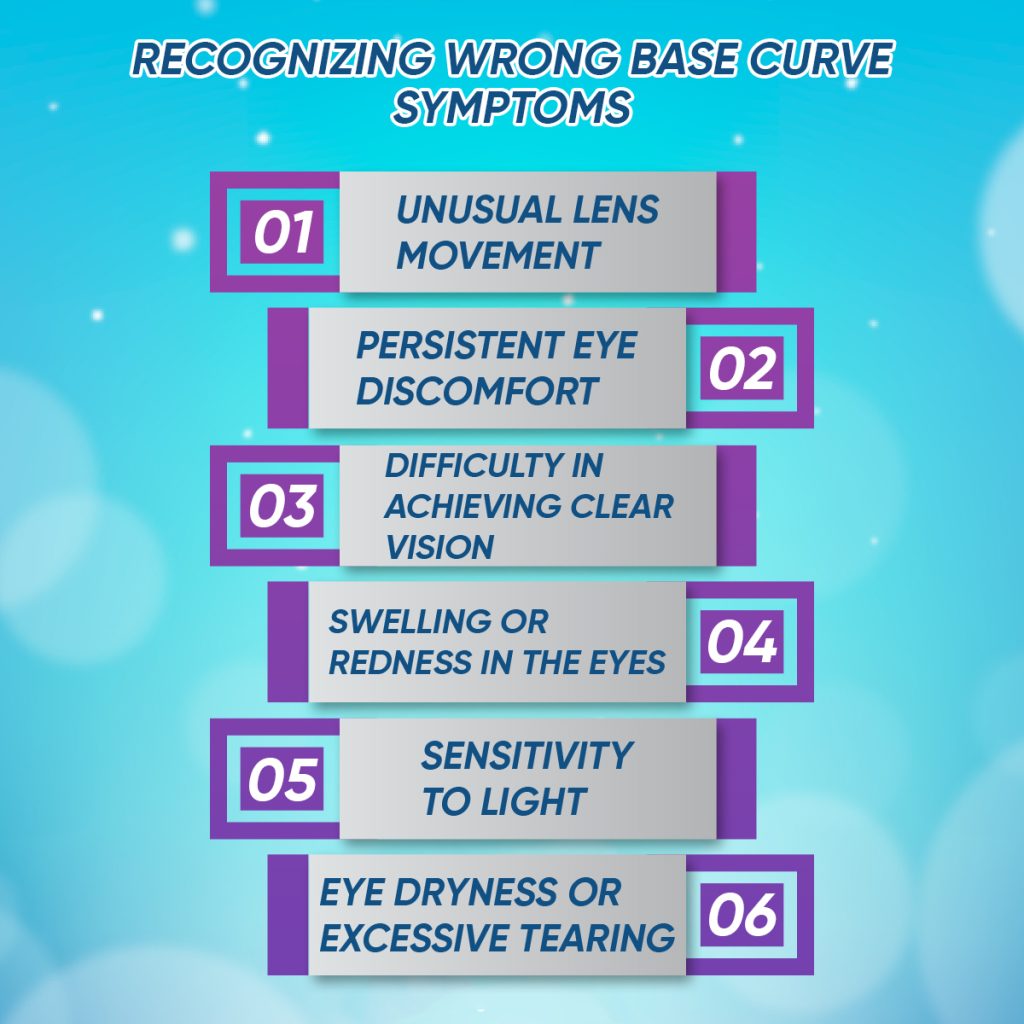
- Unusual lens movement: If the base curve is too flat or too steep, the lens may move excessively or feel unstable on your eye[^2^].
- Persistent eye discomfort: A wrong base curve can cause the lens to fit too tightly or loosely, leading to constant discomfort or irritation.
- Difficulty in achieving clear vision: An ill-fitting base curve may result in distorted or blurry vision, making it challenging to focus on objects.
- Swelling or redness in the eyes: A poorly fitting base curve can restrict oxygen flow to the cornea, leading to inflammation or redness[^3^].
- Sensitivity to light: Incorrect base curve fitting can cause increased light sensitivity, causing discomfort in bright environments.
- Eye dryness or excessive tearing: A wrong base curve can either cause the eye to dry out or produce excessive tears in an attempt to lubricate the eye and alleviate discomfort[^4^].
Tips for Avoiding Problems Caused by Wrong Base Curve and Diameter
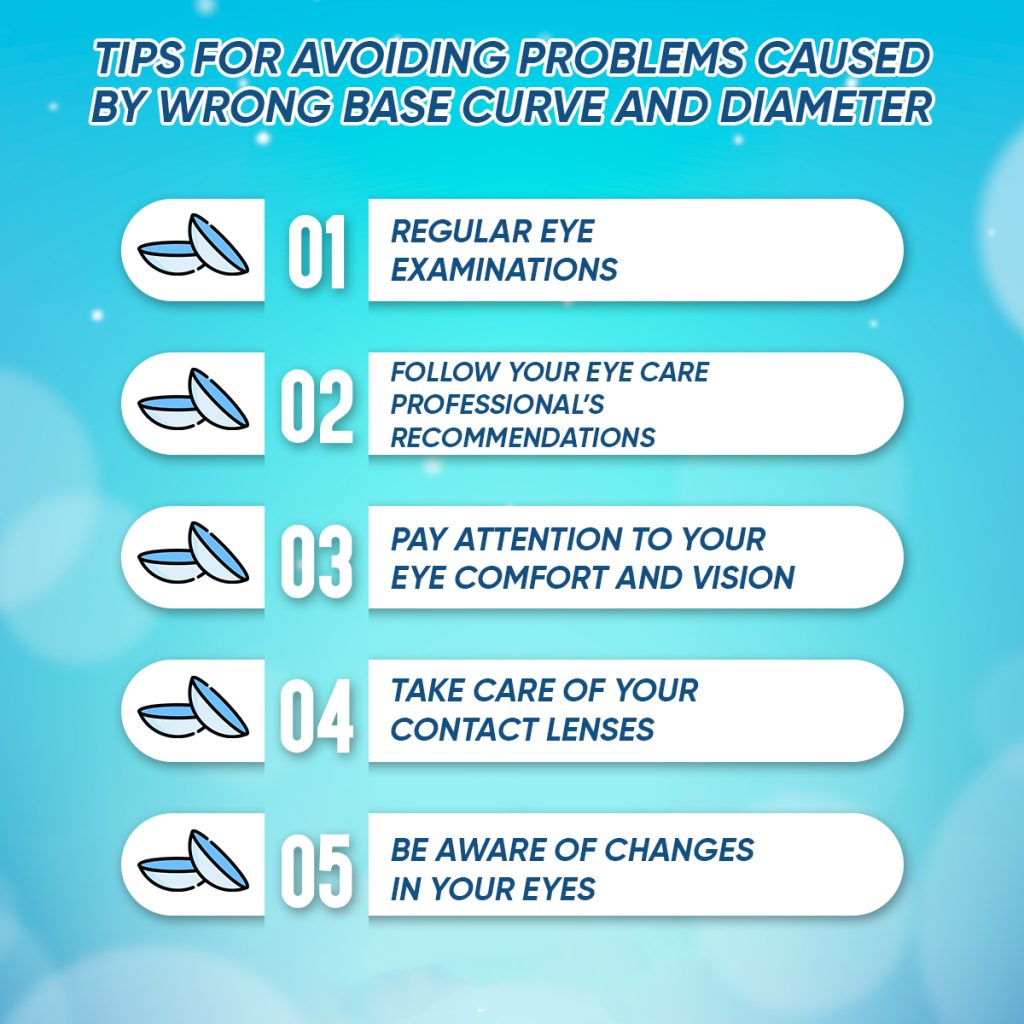
1. Regular eye examinations
Regular eye exams help ensure that your contact lens prescription stays up-to-date. This includes adjustments to the base curve and diameter if necessary.
2. Follow your eye care professional’s recommendations:
Always follow the advice of your eye care professional when selecting contact lenses. They are the most knowledgeable about your eye health and specific needs.
3. Pay attention to your eye comfort and vision:
Be aware of any changes in your eye comfort or vision quality while wearing contact lenses. If you notice any incorrect base curve or diameter symptoms, consult your eye care professional immediately.
4. Take care of your contact lenses:
Proper lens care is crucial for maintaining your eye health and the overall comfort of wearing contact lenses. Clean and disinfect your lenses as directed and replace them according to the prescribed schedule.
5. Be aware of changes in your eyes:
The shape of your cornea and the size of your eyes can change over time. Regular eye exams and staying in touch with your eye care professional can help ensure that your contact lens prescription stays up-to-date with any changes in your eyes.
Conclusion
Even though contact lenses are supposed to be a flexible option to fit your lifestyle, we would still recommend wearing the proper size that fits you best in the long run to protect your eyes and your sight. Now you know the ways to tell if your contacts are not in the right size. Please follow the recommended prescriptions provided by your eye care specialists.

Read More:

